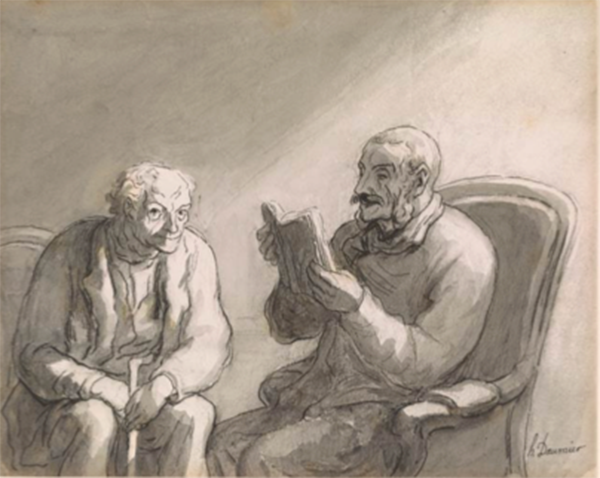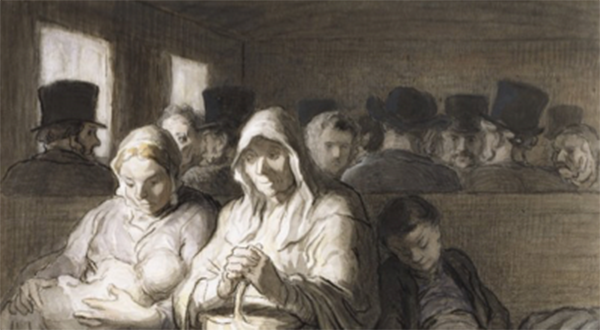Depicting Modernity: The Drawings of Honoré Daumier

Daumier, The Drinkers, c. 1860 Watercolor, ink, and charcoal on paper Sterling and Francine Clark Art Institute, Williamstown, Massachusetts
Daumier developed his artistic grounding following his arrival in Paris in the early years of the 1820s. Alongside his study at the Académie Suisse, a more liberal alternative to the Académie des Beaux Arts, Daumier undertook a lithography apprenticeship with Zepherin Belliard. This training allowed Daumier to master the making of lithographs, but it also revealed to the young artist the power of imagery as a means of commenting on contemporary culture. This commentary became one of Daumier's central aims.
By the 1830s, for example, Daumier used his images to critique corrupt political regimes elsewhere in Europe but also in France, In fact, his scathing renderings of French Emperor Louis Phillipe were so controversial that they landed the artist in jail.

Daumier, The Lecture Black Chalk, ink, and gray wash on paper The Morgan Library and Museum, New York
At the same time Daumier took issue with political matters, he also cast his artistic lens to the state of French culture and the inequalities embedded within it. Of particular interest, corresponding with the Realist movement, was the contemplation of the culture's lower classes, which were often ignored by those with money and power. Some of these contemplation's he transformed into now-celebrated oil-on-canvas compositions, but one can see the root emotion of these works manifested in their preparatory drawings. Such is the case with an early study for The Third Class Carriage (1864). Here, Daumier envisions a scene wherein French society's lower classes are thrust into focus, relegating the upper classes to the background of the image. His aim to convey the dignity and importance of these people despite their diminished economic state, which he conveys quite powerfully here in the manner in which this peasant family is illuminated against the dark sea of wealthy individuals behind them.
Daumier, The Third Class Carriage, 1864 Watercolor, ink and charcoal on textured paper The Walters Art Museum, Baltimore, Maryland
In these drawings, Daumier was capturing and commenting upon his own time, but his message is one that still resonates today. Thus, a look to the drawings of Daumier is a look into our modern world, rendered one powerful stroke at a time.
Are you a fan of Daumier's compositions? Have a favourite satirical image by the artist? Tell us about it!
